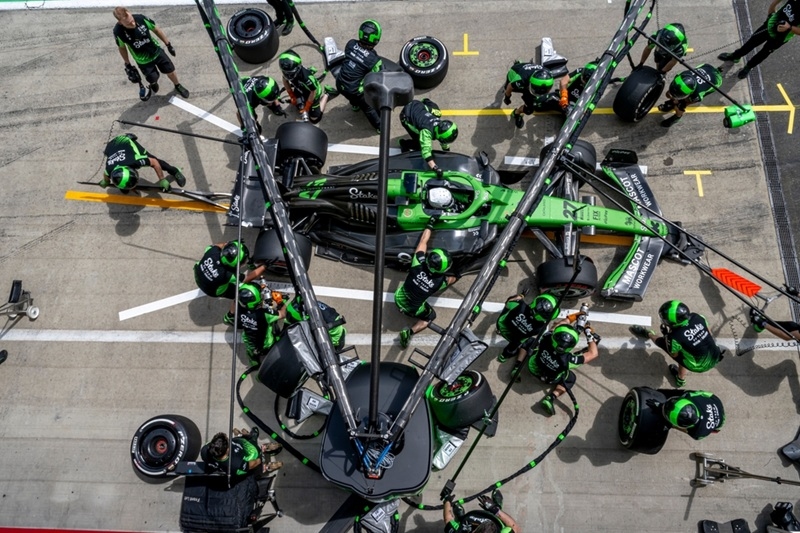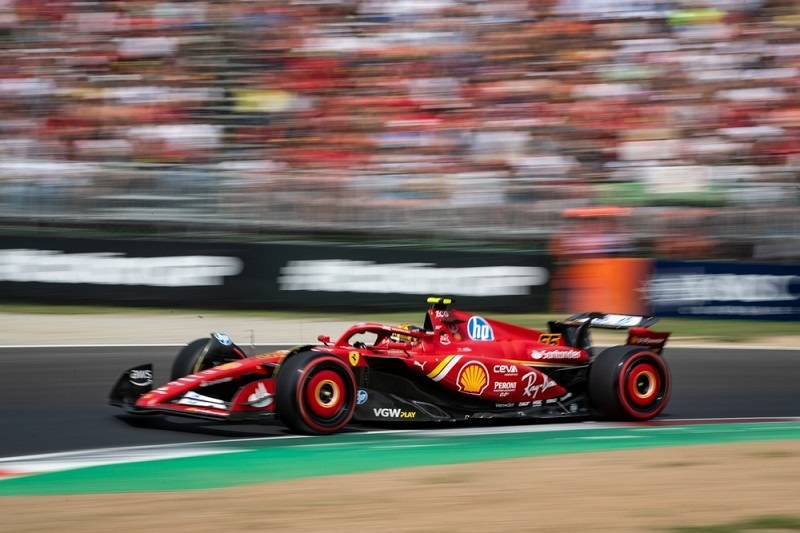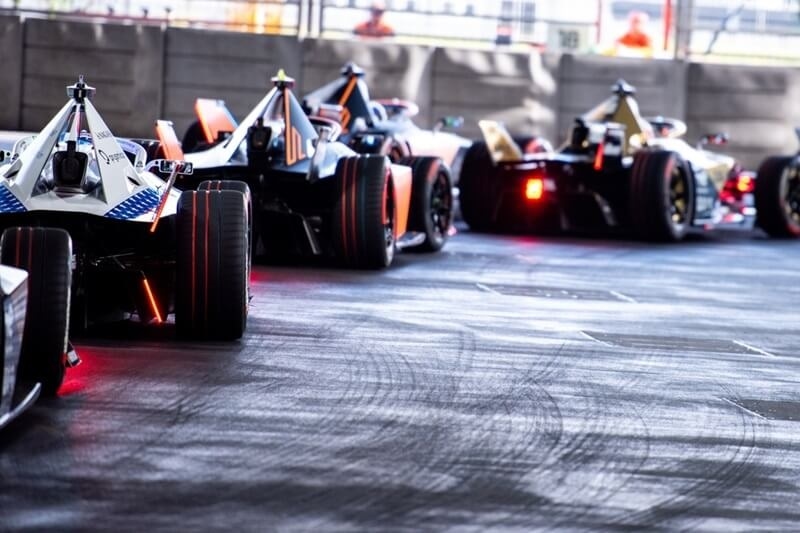F1 Sprint Beginner's Guide: Rules, Format, History, & More

Walking around the Grand Prix track is itself an exciting event, and Formula 1 racing is no less fascinating. Bogus cars flying at death-defying speed, drivers and strategists plotting like they’re planning a get-away heist, and fans holding their breaths as every corner is taken. But then F1 management said, “Wait a minute, let’s make it more interesting.” Enter the F1 Sprint. Let me tell you right here: this website is for people who have never heard about it, those who maybe have heard of it but are not exactly sure what it entails, or those who just want a reason to flex their F1 expert knowledge when they are next organizing a watch party. So, without further ado, let’s explore F1 Sprints – a tasty additional side dish to every race weekend that serves up raw speed, tactical nous, and just a pinch of unpredictability.
What Is the F1 Sprint?
Suppose, differently, F1 wanted to add a mini race to the big one, something like a warm-up before the main race on Sunday. That’s the Sprint. This one is simply one of the short and intense races that are staged on certain weekends of the season, which means fans get to see drivers and teams in action even more. The Sprint isn’t just for show, though. It’s got real stakes. The finishing order in the Sprint can influence the starting grid and pole positions for the main race. Plus, the top finishers in the Sprint get bonus championship points. It’s like the F1 version of a pregame warm-up, except everyone’s going 200 miles per hour.
A Quick History of the F1 Sprint
The F1 Sprint is a comparatively new format that was introduced in the current year, 2021. To be quite clear, it's like F1 changing a little bit and giving the format a twist. Of course, traditionalists might have complained a little (as they always are likely to do), but players and teams alike soon came around to the concept. Sprint was initially trialed for the first time in just three race weekends during the first year of the new format, but given the response it received, F1 chose to continue the segment. It has subsequently been run on a one-off basis on particular weekends and is now a galvanizing factor in the race schedule.
How Does the F1 Sprint Work?
Alright, let’s break it down. The F1 Sprint is a shorter version of the actual Grand Prix, and the race usually takes roughly 100 kilometers (or 62 miles for the non-metrically inclined). After those hours of concentration, it would appear that the cars themselves are taking only a third of the total distance of a full race. There are no pit stops required, so it’s basically a flat-out sprint from start to finish. Drivers can afford to use up their tires. They can even afford to devise fuel strategies as they do in the main race. That is all about speed, aggression, and targeting every possible point that one can grab out of the game. Speaking of points, only the top finishers in the Sprint earn them, so tension is crazy high, and the stakes are even higher. The winner gets a handful of points. Second place gets a few less, and so on. It’s not a game-changer for the championship, but it can certainly give drivers and teams a little boost.
You May Also Like: 12 Worst F1 Crashes of the Last Decade: Shocking Accidents
How Does the Sprint Affect the Weekend?
On Sprint weekends, the traditional format gets a bit of a shake-up. Qualifying, which usually happens on Saturday, gets bumped to Friday and determines the starting grid for the Sprint. The Sprint, in turn, sets the grid for Sunday’s Grand Prix. Confused yet? Don’t worry—it’s simpler than it sounds. Just think of it like this: Friday is for qualifying, Saturday is for the Sprint, and Sunday is for the big race. It’s a weekend packed with action, which is a win for fans and an extra challenge for teams.

Why Fans Love the F1 Sprint
Come on now. Who wouldn’t like more racing? The F1 Sprint just sets another exciting layer for the weekend, as fans can see that drivers can throw everything they get without having to worry about things such as tires or fuel. It’s raw and unadulterated, in a way, and that is the beauty that comes with watching a true authentic race. The Sprint also changes the traditional scenario of the race weekend. It’s an illusion that what takes place when a driver makes more moves and gains more points has a greater sense of probability. And the fact that the Sprint can affect Sunday’s starting position only serves to complicate matters for teams.
Tips for Watching the F1 Sprint
If you’re new to F1 Sprints, here’s some advice: don’t blink. I mean, these races are very fast, and you don’t want to blink as a single moment of the race happens. You don’t get a warm-up lap or a practice start as the racing is usually furious from the first lap, so don’t forget the popcorn and coke. Don’t take your eye off the ball at the beginning of the Sprint; this is when the action is most hot. Off the tail, it has been found that since there are fewer laps to complete to cover the gaps, the drivers are usually aggressive at the starting line. Look forward to the turning point attack, narrow margins, and possibly the odd hiccup.
Criticisms of the F1 Sprint
And yet, of course, not everyone likes the Sprint. A few critics of the tradition believe that it hampers the significance of the major race or that it’s a mere nuisance. Some complain that it adds additional pressure on teams and drivers during what is already a very busy weekend. However, whether you like it or dislike it, there is no denying that Sprint brings an extra layer of excitement to race weekends. Whether it’s here to stay for the long haul or just a temporary experiment, it’s certainly made its mark on the F1 world.
Strategies for Teams and Drivers
From a team’s perspective, the Sprint is a tricky beast. On the one hand, it’s an opportunity to earn extra points and improve their position for Sunday’s race. On the other hand, it’s a risk. An accident or mechanical issue during the Sprint could put a driver on the back foot for the main event. Drivers, meanwhile, have to strike a delicate balance. Push too hard in the Sprint, and you risk damaging the car or ending up out of contention for the Grand Prix. Play it too safe, and you might miss out on valuable points. It’s a high-stakes game and every decision matters.
Similar Reads You May Enjoy: Trailblazing F1 Female Drivers: Breaking Barriers in Racing
Wrapping Up: Is the F1 Sprint for You?
Whether you’re a die-hard F1 fan or a newcomer to the sport, the Sprint offers something unique. It’s fast, it’s intense, and it’s a great way to pack even more action into a race weekend. So, the next time you see an F1 Sprint on the schedule, make sure to tune in. It’s a chance to see the drivers push their cars to the limit and maybe even shake up the usual pecking order. And who knows? You might just find yourself hooked on this high-speed spectacle. Now, go forth and enjoy the thrill of the Sprint. Just don’t forget to brush up on your racing lingo first—because calling it “the short race thingy” probably won’t impress your friends.
This content was created by AI




